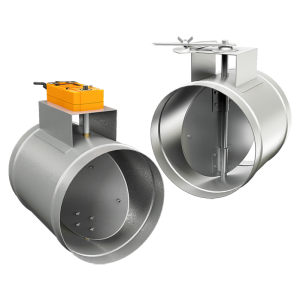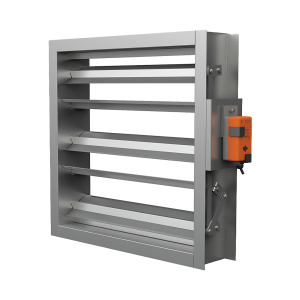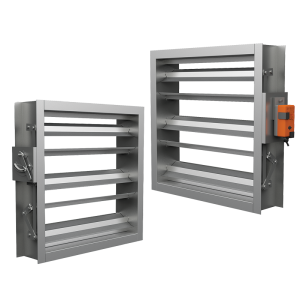
3D
Basically, the manual duct damper is used to control the air flow rate in the ducts and valves, especially the air distribution valve, and its function in the air ducts is exactly the same as the water valve in the water supply pipelines. For this purpose, it is used both for connecting and disconnecting and for controlling the amount of current. This operation is done by the built-in vanes, which are disc type in this model. This air flow control is done when there is a need for aeration in one area or in one season of the year, as well as to control the speed and adjust the appropriate aeration in different branches. It becomes important if it is a channel.
Duct dampers are a device to stop or adjust the air flow in the ducts. The damper may be placed on the main line of the air channel, or it may be placed on any side line of the room to the room of the channel damper to block the air entering the room that is not in use, or the air entering (hot or cold air) to each room. be made Dampers of the channels are set to manual and automatic wash. Manual dampers are adjusted by the damper handle that is installed on the outer space of the damper.
Manual damper can be supplied in two types, round and square. Also, this type of dampers can be supplied with a single-layer vane with a V-shaped geometry or as a double-layer vane with an airfoil geometry. For better air sealing, if required by the customer, a steel air sealing strip is used on the connecting point of the blade shaft to the frame. It is also possible to add a silicone rubber air sealing strip on the edge of the vane to minimize air leakage when the damper is fully closed. Manual channel dampers can be produced in two forms: mutual vane for more control over the flow and parallel vane to cut off the air flow faster.
Making a manual damper
Manual dampers are made as single blades. The vanes of this type of damper with the help of a lever made of PVC or iron have the ability to open or close up to a phase difference of 90 degrees, and as a result of this change in the angle of the vane in the air path of the channel; The flow passage is blocked or reversed and as a result the flow is controlled.
Installation conditions: The installation of these types of dampers, such as manual channel dampers and double-vane motorized dampers, is usually flange-to-flange between two channels. The standard of damper depth or the empty distance between two channels for damper installation is 16 cm. If the size of the damper is large, supports taken from the ceiling or wall should be used to restrain it. These dampers can be installed as a flange head on the end space of the channel or on the openings. For this work, a frame or sub-frame that has already been seen to be installed on the opening and to bear the weight of the damper is needed.
Testing ability: It is possible to measure the amount of leakage based on D500 and AMCA 511-10 standards in the laboratory of Shahrokhi Technical Institute. It is also possible to measure the pressure drop applied in the ducting system by this type of damper and to measure the rate of air flow in this type of damper based on national standards ISIRI 7693 and ISIRI 7695 and international standards ISO5219 and ISO5221 in the laboratory of Shahrokhi Technical Institute. There is. Balancing the air conditioning system after installing the anti-explosion damper and other dampers is another capability of Shahrokhi Technical Institute laboratory.
Final coating: It is possible to degrease the frame and vanes of this type of damper by washing in a soda bath. It is also possible to paint according to the customer’s instructions. Epoxy, polyurethane and powder colors are applicable for this type of damper.



